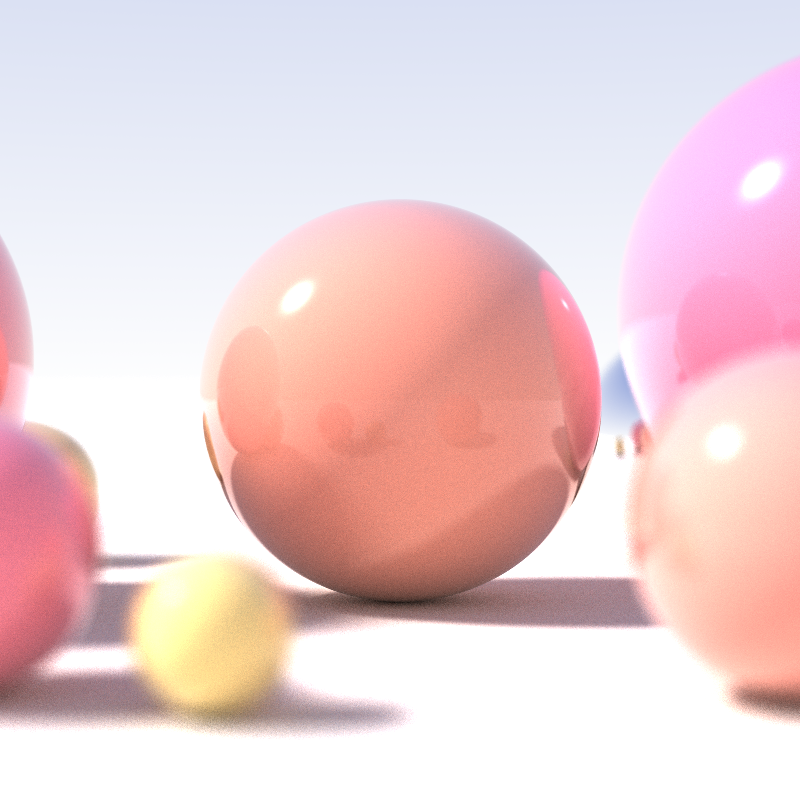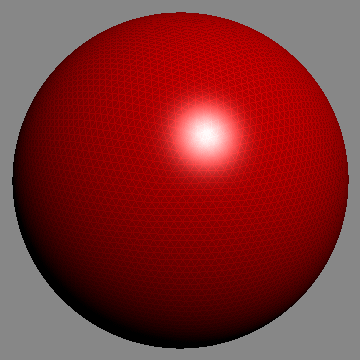|
Ray-traced Ambient Occlusion
Ray-traced ambient occlusion is a computer graphics technique and ambient occlusion global illumination algorithm In mathematics and computer science, an algorithm () is a finite sequence of Rigour#Mathematics, mathematically rigorous instructions, typically used to solve a class of specific Computational problem, problems or to perform a computation. Algo ... using ray-tracing. References Shading Computer graphics 3D computer graphics Global illumination algorithms {{Compu-graphics-stub ... [...More Info...] [...Related Items...] OR: [Wikipedia] [Google] [Baidu] |
Ambient Occlusion
In 3D computer graphics, modeling, and animation, ambient occlusion is a shading and rendering technique used to calculate how exposed each point in a scene is to ambient lighting. For example, the interior of a tube is typically more occluded (and hence darker) than the exposed outer surfaces, and becomes darker the deeper inside the tube one goes. Ambient occlusion can be seen as an accessibility value that is calculated for each surface point. In scenes with open sky this is done by estimating the amount of visible sky for each point, while in indoor environments only objects within a certain radius are taken into account and the walls are assumed to be the origin of the ambient light. The result is a diffuse, non-directional shading effect that casts no clear shadows, but that darkens enclosed and sheltered areas and can affect the rendered image's overall tone. It is often used as a post-processing effect. Unlike local methods such as Phong shading, ambient occlusion i ... [...More Info...] [...Related Items...] OR: [Wikipedia] [Google] [Baidu] |
Global Illumination
Global illumination (GI), or indirect illumination, is a group of algorithms used in 3D computer graphics that are meant to add more realistic lighting Lighting or illumination is the deliberate use of light to achieve practical or aesthetic effects. Lighting includes the use of both artificial light sources like lamps and light fixtures, as well as natural illumination by capturing daylight. ... to 3D scenes. Such algorithms take into account not only the light that comes directly from a light source (''direct illumination''), but also subsequent cases in which light rays from the same source are reflected by other surfaces in the scene, whether reflective or not (''indirect illumination''). Theoretically, reflections, refractions, and shadows are all examples of global illumination, because when simulating them, one object affects the rendering of another (as opposed to an object being affected only by a direct source of light). In practice, however, only the simulati ... [...More Info...] [...Related Items...] OR: [Wikipedia] [Google] [Baidu] |
Algorithm
In mathematics and computer science, an algorithm () is a finite sequence of Rigour#Mathematics, mathematically rigorous instructions, typically used to solve a class of specific Computational problem, problems or to perform a computation. Algorithms are used as specifications for performing calculations and data processing. More advanced algorithms can use Conditional (computer programming), conditionals to divert the code execution through various routes (referred to as automated decision-making) and deduce valid inferences (referred to as automated reasoning). In contrast, a Heuristic (computer science), heuristic is an approach to solving problems without well-defined correct or optimal results.David A. Grossman, Ophir Frieder, ''Information Retrieval: Algorithms and Heuristics'', 2nd edition, 2004, For example, although social media recommender systems are commonly called "algorithms", they actually rely on heuristics as there is no truly "correct" recommendation. As an e ... [...More Info...] [...Related Items...] OR: [Wikipedia] [Google] [Baidu] |
Ray Tracing (graphics)
In 3D computer graphics, ray tracing is a technique for modeling Light transport theory, light transport for use in a wide variety of Rendering (computer graphics), rendering algorithms for generating digital image, digital images. On a spectrum of Computation time, computational cost and visual fidelity, ray tracing-based rendering techniques, such as ray casting, #Recursive ray tracing algorithm, recursive ray tracing, Distributed ray tracing, distribution ray tracing, photon mapping and path tracing, are generally slower and higher fidelity than scanline rendering methods. Thus, ray tracing was first deployed in applications where taking a relatively long time to render could be tolerated, such as still computer-generated imagery, CGI images, and film and television visual effects (VFX), but was less suited to real-time computer graphics, real-time applications such as video games, where Frame rate, speed is critical in rendering each Film frame, frame. Since 2018, however, ... [...More Info...] [...Related Items...] OR: [Wikipedia] [Google] [Baidu] |
Shading
Shading refers to the depiction of depth perception in 3D models (within the field of 3D computer graphics) or illustrations (in visual art) by varying the level of darkness. Shading tries to approximate local behavior of light on the object's surface and is not to be confused with techniques of adding shadows, such as shadow mapping or shadow volumes, which fall under global behavior of light. In drawing Shading is used traditionally in drawing for depicting a range of darkness by applying media more densely or with a darker shade for darker areas, and less densely or with a lighter shade for lighter areas. Light patterns, such as objects having light and shaded areas, help when creating the illusion of depth on paper. There are various techniques of shading, including cross hatching, where perpendicular lines of varying closeness are drawn in a grid pattern to shade an area. The closer the lines are together, the darker the area appears. Likewise, the farther apart the lin ... [...More Info...] [...Related Items...] OR: [Wikipedia] [Google] [Baidu] |
Computer Graphics
Computer graphics deals with generating images and art with the aid of computers. Computer graphics is a core technology in digital photography, film, video games, digital art, cell phone and computer displays, and many specialized applications. A great deal of specialized hardware and software has been developed, with the displays of most devices being driven by graphics hardware, computer graphics hardware. It is a vast and recently developed area of computer science. The phrase was coined in 1960 by computer graphics researchers Verne Hudson and William Fetter of Boeing. It is often abbreviated as CG, or typically in the context of film as Computer-generated imagery, computer generated imagery (CGI). The non-artistic aspects of computer graphics are the subject of Computer graphics (computer science), computer science research. Some topics in computer graphics include user interface design, Sprite (computer graphics), sprite graphics, raster graphics, Rendering (computer graph ... [...More Info...] [...Related Items...] OR: [Wikipedia] [Google] [Baidu] |
3D Computer Graphics
3D computer graphics, sometimes called Computer-generated imagery, CGI, 3D-CGI or three-dimensional Computer-generated imagery, computer graphics, are graphics that use a three-dimensional representation of geometric data (often Cartesian coordinate system#Cartesian coordinates in three dimensions, Cartesian) that is stored in the computer for the purposes of performing calculations and rendering digital images, usually 2D images but sometimes 3D images. The resulting images may be stored for viewing later (possibly as an Computer animation, animation) or displayed in Real-time computer graphics, real time. 3D computer graphics, contrary to what the name suggests, are most often displayed on two-dimensional displays. Unlike 3D film and similar techniques, the result is two-dimensional, without visual depth perception, depth. More often, 3D graphics are being displayed on 3D displays, like in virtual reality systems. 3D graphics stand in contrast to 2D computer graphics which t ... [...More Info...] [...Related Items...] OR: [Wikipedia] [Google] [Baidu] |




